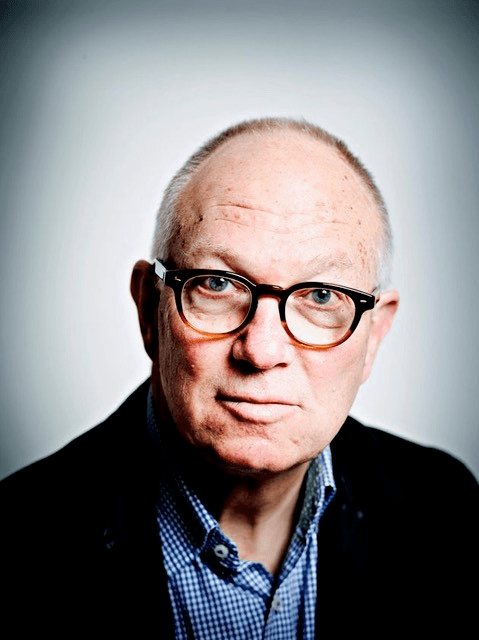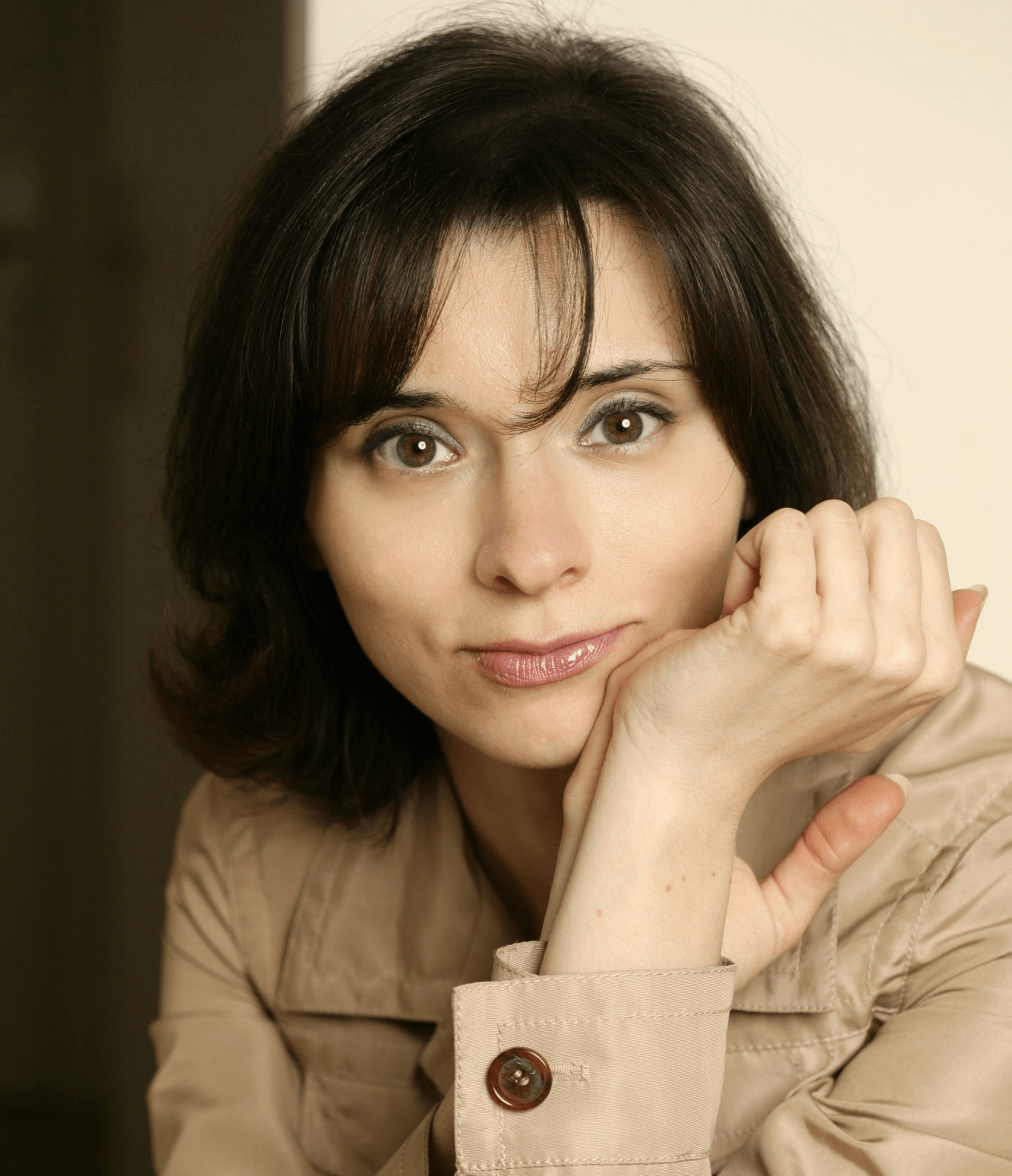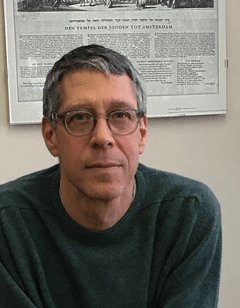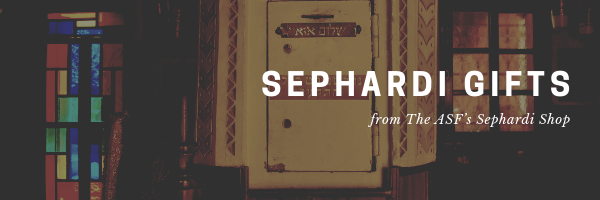In Memory of former US Senator from Connecticut Joseph Lieberman, A”H, a patriot who championed character over careerism, principles over partisanship, the strategic and moral necessity of an American-led Free World fighting evil, and whose Jewish observances in public life were a Kiddush HaShem
Click here to dedicate a future issue in honor or memory of a loved one
Upcoming Events ◊ ASF Sephardi Shop ◊ Donate ◊ Sephardi Ideas Monthly ◊ ASF IJE ◊ ASF Sephardi House ◊ Archive ◊ View Online
The Sephardi World Weekly is made possible by Daniel Yifrach, Rachel Sally, Professor Rifka Cook, Maria Gabriela Borrego Medina, Rachel Amar, Deborah Arellano, & ASF VP Gwen Zuares!
Don't miss the latest Sephardi Ideas Monthly: “Building the Land from Sephardi Jerusalem to Jazz Age Shanghai”
“One Maimonides or Two?”
By Warren Zev Harvey, Tablet Magazine
Maimonides depicted in one of “23 marble relief portraits over the gallery doors of the House Chamber in the U.S. Capitol” by Brenda Putname, 1950
(Photo courtesy of the Architect of the Capitol)
More than 800 years after Maimonides’ passing, scholars of Jewish Thought and Law continue to read his books for direction in legal rulings and philosophical exploration.
Part of Maimonides’ charm lies in the mystery of his grand conception: how did the different parts of Maimonides’ philosophical-theological-legal vision of Judaism cohere, both within Judaism and within his own soul? Thanks to this mystery, there is a never-ending debate among scholars—800 years and counting—regarding how to understand the deepest intention of the Great Eagle of Andalusia.
Isadore Twersky (1930 – 1997) was an Orthodox communal rabbi from an illustrious Hassidic family who held the position of the Nathan Littauer Professor of Hebrew Literature and Philosophy at Harvard University. Prof. Twersky offered an important interpretation of Maimonides that is the subject of a recently published study by Prof. Warren Zev Harvey, Isadore Twersky on Maimonides' Philosophy. Prof. Harvey is Professor Emeritus in the Department of Jewish Thought at the Hebrew University of Jerusalem.
According to Harvey:
Maimonides, as Twersky portrayed him… was not interested in a synthesis of Jewish law or halakhah and philosophy, but rather he sought an integration of Jewish law and philosophy. The key word to understanding Twersky’s approach is “integration.”
“Integration” and “synthesis” are not synonyms. In a synthesis, the thesis and antithesis are replaced by something new, the synthesis. The synthesis supersedes the thesis and the antithesis, rendering them both anachronistic... In an integration, however, all elements remain true to themselves...
How do the different parts of Judaism remain “true to themselves” but also part of an integrated whole? Thanks to the grounding and “fertile” power of Judaism’s mainstream, Halakha, or Jewish Law. In this context, Harvey quotes Twersky’s “unforgettable Parable of the River”
Jewish intellectual history … is comparable to a fast-moving stream coursing through a complex network of tributaries and offshoots… philosophy and mysticism, rationalism and pietism, exegesis and commentary, poetry and belles-lettres, linguistics and grammar… At various times, the philosophic tributary swelled in certain areas while the mystical waters raged elsewhere; or the philosophic tributary changed its course, only to have its former bed occupied by mystical currents. Poetry and belles-lettres… might reach inundating proportions and they might dry up completely. The courses of these streams deserve to be—and, to a great extent, have been—charted… The mainstream, however, was the halakhah (Jewish law)—its ever-expanding corpus of literature and its cumulative body of practice.
Ultimately, however, Harvey notes a large difference separating Twersky from his Maimonidean model
In their evaluation of the non-halakhic disciplines, Twersky was a pluralist and Maimonides was not. Maimonides was a philosopher who prioritized the life of philosophy. In his eyes, for example, poetry was much inferior to philosophy. In Twersky’s Parable of the River, however, all the dazzling tributaries and offshoots of the main river are equal. Philosophy, kabbalah, poetry, exegesis, belles-lettres, grammar, etc., are all equal. Twersky gives preference to none. For him, unlike for Maimonides, all of the dazzling non-halakhic disciplines of the Jewish tradition are equal, and all equally deserve our admiration—and our study.
On 13 Match the ASF opened a new exhibition “The Golden Age of the Jews of Alandalus” | “La Edad de Oro de los judíos de Alandalús” at the Center for Jewish History.
The exhibit will be inaugurated on 11 April at 6:30PM
Sign-up Now!
A Robust Center: From America to Israel with Bret Stephens
Greg Thomas, Bret Stephens, & Aryeh Tepper on The “Straight Ahead” Omni-American Future Project Podcast
(Screenshot courtesy of YouTube)
The “Straight Ahead” Podcast is back for season two. Co-hosted by the ASF’s Director of Publications and co-Director of the Omni-American Future Project, Aryeh Tepper, together with co-host and co-Director, Greg Thomas, the first guest of the second season is Pulitzer Prize winning writer and New York Times opinion columnist, Bret Stephens. In a thought-provoking, adventurous, and humorous discussion, Stephens, Thomas, and Tepper examine how and why the United States finds itself in its current political mess and why a robust center is essential for the health of American democracy, the importance of political philosopher Danielle Allen (recipient of the 2nd Omni-American Award), and the radicalism of the American experiment. One of the strongest defenders of Israel on the American scene, Stephens debunks disinformation and notes the necessity of confronting Islamism.
“Asian descendants of hidden Jews maintain their languages”
By Dor Shabashewitz, Forward
A Kristang folk dance
(Photo courtesy of Victor Pogadaev/Forward)
Is there Jewish converso history in South and East Asia? Consider the following
Portugal once controlled many port cities throughout Asia. Almost every area that used to be part of the Portuguese Empire is home to small ethnic groups of mixed heritage such as the Macanese in Macau, China, and the Kristang people in Singapore and Malaysia.
These small, mixed-ancestry ethnic groups
… also belong to a different faith than most people in their respective countries and speak unique languages of their own. Both the Macanese and the Kristang are often described as tight-knit and somewhat closed-off communities which preserve their traditions, refuse to assimilate and are disproportionately successful in business, research and art.
These creole peoples are
descendants of marriages between European settlers, most of them Portuguese, and various peoples indigenous to the former colonies, such as Malays and the Chinese.
The possible Jewish connection? “Many of those who left Portugal in the 16th century were Sephardim. They were anusim or ‘conversos.’” A member of the Kristang community, Edgar Pinto, even wrote a book about the assimilation of the Jews of Malacca into the Kristang. Meanwhile, activists are hard at work trying to preserve creole languages that “are threatened with extinction”:
Malaysia, home to many of the Kristang, is often described as an Islamic ethnostate which isn’t very tolerant to its ethnic, linguistic and religious minorities. In Singapore… English is displacing all other languages as the primary tool of interethnic and international communication.
~~~~~~~
Spinoza: Freedom's Messiah (Jewish Lives)
By Ian Buruma
Baruch (Benedictus) Spinoza (1632–1677) was a radical free thinker who led a life guided by strong moral principles despite his disbelief in an all-seeing God. Seen by many—Christians as well as Jews—as Satan’s disciple during his lifetime, Spinoza has been regarded as a secular saint since his death. Many contradictory beliefs have been attached to his name: rationalism or metaphysics, atheism or pantheism, liberalism or despotism, Jewishness or anti-Semitism. However, there is no question that he viewed freedom of thought and speech as essential to an open and free society.
In this insightful account, the award-winning author Ian Buruma stresses the importance of the time and place that shaped Spinoza, beginning with the Sephardim of Amsterdam and followed by the politics of the Dutch Republic. Though Spinoza rejected the basic assumptions of his family’s faith, and was consequently expelled from his Sephardic community, Buruma argues that Spinoza did indeed lead a Jewish life: a modern Jewish life. To Heine, Hess, Marx, Freud, and no doubt many others today, Spinoza exemplified how to be Jewish without believing in Judaism. His defense of universal freedom is as important for our own time as it was in his.
Betraying Spinoza: The Renegade Jew Who Gave Us Modernity (Jewish Encounters Series)
By Rebecca Newberger Goldstein
In 1656, Amsterdam’s Jewish community excommunicated Baruch Spinoza, and, at the age of twenty–three, he became the most famous heretic in Judaism. He was already germinating a secularist challenge to religion that would be as radical as it was original. He went on to produce one of the most ambitious systems in the history of Western philosophy, so ahead of its time that scientists today, from string theorists to neurobiologists, count themselves among Spinoza’s progeny.
In Betraying Spinoza, Rebecca Goldstein sets out to rediscover the flesh-and-blood man often hidden beneath the veneer of rigorous rationality, and to crack the mystery of the breach between the philosopher and his Jewish past. Goldstein argues that the trauma of the Inquisition’ s persecution of its forced Jewish converts plays itself out in Spinoza’s philosophy. The excommunicated Spinoza, no less than his excommunicators, was responding to Europe’ s first experiment with racial anti-Semitism.
Here is a Spinoza both hauntingly emblematic and deeply human, both heretic and hero—a surprisingly contemporary figure ripe for our own uncertain age.
Think Least of Death: Spinoza on How to Live and How to Die
By Steven Nadler
From Pulitzer Prize-finalist Steven Nadler, an engaging guide to what Spinoza can teach us about life’s big questions
In 1656, after being excommunicated from Amsterdam’s Portuguese-Jewish community for “abominable heresies” and “monstrous deeds,” the young Baruch Spinoza abandoned his family’s import business to dedicate his life to philosophy. He quickly became notorious across Europe for his views on God, the Bible, and miracles, as well as for his uncompromising defense of free thought. Yet the radicalism of Spinoza’s views has long obscured that his primary reason for turning to philosophy was to answer one of humanity’s most urgent questions: How can we lead a good life and enjoy happiness in a world without a providential God? In Think Least of Death, Pulitzer Prize–finalist Steven Nadler connects Spinoza’s ideas with his life and times to offer a compelling account of how the philosopher can provide a guide to living one’s best life.
In the Ethics, Spinoza presents his vision of the ideal human being, the “free person” who, motivated by reason, lives a life of joy devoted to what is most important―improving oneself and others. Untroubled by passions such as hate, greed, and envy, free people treat others with benevolence, justice, and charity. Focusing on the rewards of goodness, they enjoy the pleasures of this world, but in moderation. “The free person thinks least of all of death,” Spinoza writes, “and his wisdom is a meditation not on death but on life.”
An unmatched introduction to Spinoza’s moral philosophy, Think Least of Death shows how his ideas still provide valuable insights about how to live today.
Maimonides, Spinoza and Us: Toward an Intellectually Vibrant Judaism
By Rabbi Marc D. Angel
A challenging look at two great Jewish philosophers, and what their thinking means to our understanding of God, truth, revelation and reason. Moses Maimonides (1138–1204) is Jewish history’s greatest exponent of a rational, philosophically sound Judaism. He strove to reconcile the teachings of the Bible and rabbinic tradition with the principles of Aristotelian philosophy, arguing that religion and philosophy ultimately must arrive at the same truth. Baruch Spinoza (1632–77) is Jewish history’s most illustrious “heretic.” He believed that truth could be attained through reason alone, and that philosophy and religion were separate domains that could not be reconciled. His critique of the Bible and its teachings caused an intellectual and spiritual upheaval whose effects are still felt today. Rabbi Marc D. Angel discusses major themes in the writings of Maimonides and Spinoza to show us how modern people can deal with religion in an intellectually honest and meaningful way. From Maimonides, we gain insight on how to harmonize traditional religious belief with the dictates of reason. From Spinoza, we gain insight into the intellectual challenges which must be met by modern believers.
~~~~~~~
Upcoming Events or Opportunities
Our friends at Qesher present:
The Jews of Yemen and a Journey on the Magic Carpet
“The Jewish community of Yemen has existed since antiquity, but today comprises just a handful of affiliated members. The past century saw the largest waves of immigration to Israel, among which my grandmother took part. Through conversations with her, I learned both of her personal ordeal as a child thrust into the unknown, as well as the changing way of life for Yemenites in Israel. They and their descendants have made their mark in Israeli society and have contributed much to religious study, music, crafts and, of course, food.”
Thursday, 28 March at 3:00PM ET
Sign-up Now!
Tickets: $9-$18
~~~~~~~
The American Sephardi Federation and Jewish Lives at Yale University Press present:
Why Spinoza Matters Now: Truth and Freedom in America Today
Join us for a lively and timely discussion celebrating the launch of Ian Buruma’s new book, Spinoza: Freedom’s Messiah. Buruma will be joined on the panel by Steven Nadler, Rebecca Newberger Goldstein, & Clémence Boulouque
Sunday, 31 March at 3:00PM ET
In-Person @ the ASF - Center for Jewish History
Sign-up Now!
Tickets: $15-$500
350 years after his death, the philosophy of Baruch Spinoza remains vitally relevant — especially in this period of deep political division and with the threat to liberal democracy not only in Europe and elsewhere, but right here at home. Spinoza was the most open and important proponent of democracy, toleration, politics free from religious sectarian interference, and freedom of expression in the early modern period. He was also “cancelled” (Herem) by Amsterdam’s Jewish community.
See this New Yorker review, “Baruch Spinoza and the Art of Thinking in Dangerous Times,” as well as Buruma’s latest, “The 17th-Century Heretic We Could Really Use Now,” in The New York Times

Bard College Professor Ian Buruma, author of Spinoza: Freedom's Messiah (Jewish Lives – Yale University Press)

Moderator, Columbia University Professor Clémence Boulouque, author of Another Modernity: Elia Benamozegh’s Jewish Universalism (Stanford University Press)

University of Wisconsin-Madison Professor Steven Nadler, author of Spinoza: A Life (Cambridge University Press) and Menasseh ben Israel: Rabbi of Amsterdam (Jewish Lives – Yale University Press)

Dr. Rebecca Newberger Goldstein, author of Betraying Spinoza: The Renegade Jew Who Gave Us Modernity (Jewish Encounters Series)
We thank Professor Debra Nails for her generous support.
~~~~~~~
Instituto Cervantes New York, in partnership with the American Sephardi Federation and Centro Sefarad-Israel presents:
“The Golden Age of the Jews of Alandalus”
Lecture
Join us in a fascinating conversation about the golden age of the Jews of Alandalus during the Middle Ages.
The names of thinkers like Maimonides still resonate in the collective imagination, as well as being very relevant figures in the contemporary Jewish world. This exemplifies the huge influence of the Sephardic community around the world and the origins of this influence in Alandalus.
Raquel Benatar, Vice President for Programming of the American Sephardi Federation, and Jaime Moreno Bau, Director of Centro Sefarad Israel, will explore why the Jewish community of Alandalus was one of the most prosperous of all those that inhabited the Iberian Peninsula during the Middle Ages and how this cultural splendor was always linked to the economic bonanza derived from the Mediterranean commercial networks.
The exhibition “The Golden Age of the Jews of Alandalus” will be inaugurated on April 11th at the American Sephardi Federation.
Wednesday, 10 April at 6:30PM ET
In-Person @ Instituto Cervantes de Nueva York
211 East 49th St, NYC
Complimentary RSVP@
cultny1@cervantes.es
~~~~~~~
The Embassy of Spain to the United States, Centro Sefarad-Israel, Instituto Cervantes, the World Jewish Congress - North America and the American Sephardi Federation present:
Exhibit Inauguration: “The Golden Age of the Jews of Alandalus” | "La Edad de Oro de los judíos de Alandalús"
Join us to celebrate the Golden Age of the Jewish community of Al-Andalus with:
Ángeles Moreno Bau, Ambassador of Spain to the United States
Jaime Moreno Bau, General Director of the Centro Sefarad-Israel
David Dangoor, President of the ASF
Dr. Vanessa Paloma Duncan-Elbaz, ASF Broome & Allen Fellow, Research Associate at Cambridge University, and award-winning scholar and singer
Rabbi Yamin Levy, Founder of the Maimonides Heritage Center and author of The Founding Fathers of Sephardic Jewry and The Mysticism of Andalusia
Matt Gatton, Sephardic scholar and author of The Shadows of Socrates
Dr. Hélene Jawhara Piñer, ASF Broome & Allen Scholar, award-winning author of Sephardi: cooking the history & Jews, Food, and Spain: The Oldest Medieval Spanish Cookbook and the Sephardic Culinary Heritage
Dvir Avnon-Klein, ASF Sephardi House Fellow and talented multi-instrumentalist
Thursday, 11 April at 6:30PM ET
Program will be followed by a reception
In-Person @ the ASF - Center for Jewish History
Sign-up Now!
Tickets: $36
The exhibition has been organized by Centro Sefarad-Israel, with the collaboration of Casa del Mediterráneo, the Miller Center for Contemporary Judaic Studies, and The George Feldenkers Program in Judaic Studies of the University of Miami, the Red de Juderías de España, the World Jewish Congress, Fundación Hispano Judía, and the American Sephardi Federation.
It also has the support of Spain’s Ministry of Foreign Affairs - European Union and Cooperation, the Community of Madrid, the Madrid City Council, ElAl, Instituto Cervantes, the University of Cambridge, the University of Granada, Trinity College Dublin, and the European Research Council.
~~~~~~~
The American Sephardi Federation presents:
Socrates, Moses, and the Long Fight Against Idolatry
Join us for a fascinating discussion celebrating the launch of Matt Gatton’s new book, The Shadows of Socrates: The Heresy, War, and Treachery Behind the Trial of Socrates.
Sunday, 14 April at 4:00PM ET
In-Person @ the ASF - Center for Jewish History
Sign-up Now!
Tickets: $15-$500
The trial of the ancient Greek philosopher Socrates is widely considered the most famous trial of all time. At age 70, he was charged with impiety (a religious crime) and corrupting the youth, but the reasons for these charges were left unexplained, as the prosecution’s case was not recorded. There’s a reason for this: Socrates triggered the first great battle between philosophy and religion when he launched a searing critique of Athens’ most important and secretive idolatrous cult. Socrates has more in common with Moses, Maimonides, and Spinoza than you might ever have imagined. Sometimes the light of true reason must fight in the shadows.
~~~~~~~
The American Sephardi Federation presents:
Convergence: Arabic, Hebrew, and Persian Calligraphy in Conversation
Featuring the multilingual art of Ruben Shimonov Convergence creates a visual world where Hebrew, Arabic, and Persian languages interact with, and speak to, one another; a world where stylized letters and words dance together on the page; a world where cultures, religions, communities, and philosophies intersect.
Juxtaposing cognates from these ancient West Asian languages, artist Ruben Shimonov encourages the viewer to explore the deep-rooted connections between these tongues, as well as the multilayered and transnational identity of the artist himself.
On View in the Leon Levy Gallery
through 31 May 2024
@ the Center for Jewish History
~~~~~~~
The American Sephardi Federation and Mimouna Association’s Rebuilding Our Homes Project present:
Re-Creation: Judaica by Moroccan Muslim Artisans
Explore the exhibition of Judeo-Moroccan art, Moroccan Judaica, cultural and religious objects, including Menorot, Mezuzot, Yads, Shabbat Candleholders, Seder Plates, Hallah Covers, and much more.
On View through 31 May 2024
@ the Center for Jewish History
As Moroccan Jewish populations largely left the mellahs (Jewish quarters) in the latter half of the 20th century, there was a danger that not only designs but even the traditional artisanal techniques needed to create them would be lost. Passed down from one artisan to another and perfected over time, these designs and techniques. ranging from vibrant patterns to intricate metalwork and soulful wood carvings, are expressions of Moroccanity and reflect the individual character of each city. The materials and craftsmanship of Rabat are different than Fez, and Essaouira is distinct from both.
Mimouna Association and the American Sephardi Federation’s Rebuilding Our Homes Project, a multi-year USAID-supported New Partnerships Initiative, brought three notable experts-Ms. Zhor Rehihil, Ms. Deborah Koenigsberger Gutierrez, and Ms. Meryem Ghandi to train Moroccan Muslim artisans in the history of Judeo-Moroccan art and guided them in re-creating Moroccan Judaica, which encompasses a diverse array of cultural and religious objects, including Menorot, Mezuzot, Yads, Shabbat Candleholders, Seder Plates, Hallah Covers, and much more.
~~~~~~~
The American Sephardi Federation presents:
“The Golden Age of the Jews of Alandalus” | “La Edad de Oro de los judíos de Alandalús”
On View in the Paul S. And Sylvia Steinberg Great Hall
through 14 June 2024
@ the Center for Jewish History
The Jewish community of Alandalús gave the world extraordinary thinkers like Maimonides, diplomats like Ibn Shaprut, and poets like Ibn Gabirol and Judah Halevi, whose wisdom, works, and accomplishments resonate through the ages. 820 years after his death, the RAMBAM’s contributions to medicine, philosophy, diplomacy, and Jewish law continue to inspire wonder and influence till today. Across the Mediterranean in Fustat (Cairo) about two hundred thousand documents accumulated in the Ben Ezra Synagogue’s Genizah—a room or grave where obsolete sacred documents are respectfully discarded—over the course of nearly a millennium.
The geographical location of Egypt, a natural bridge between the Islamic East and Christian West, made it possible for many of these documents to be of Andalusian origin. This exhibition, curated by the University of Granada Professor José Martínez Delgado, takes us on a journey from the origins of this important community to its exodus and extinction in the XIX century. Although subsequently scattered all over the world, Sepharadim have maintained connections to their past by perpetuating traditions, the Ladino (Judeo-Spanish) language, and exemplifying a seriously Jewish yet cosmopolitan worldview.












